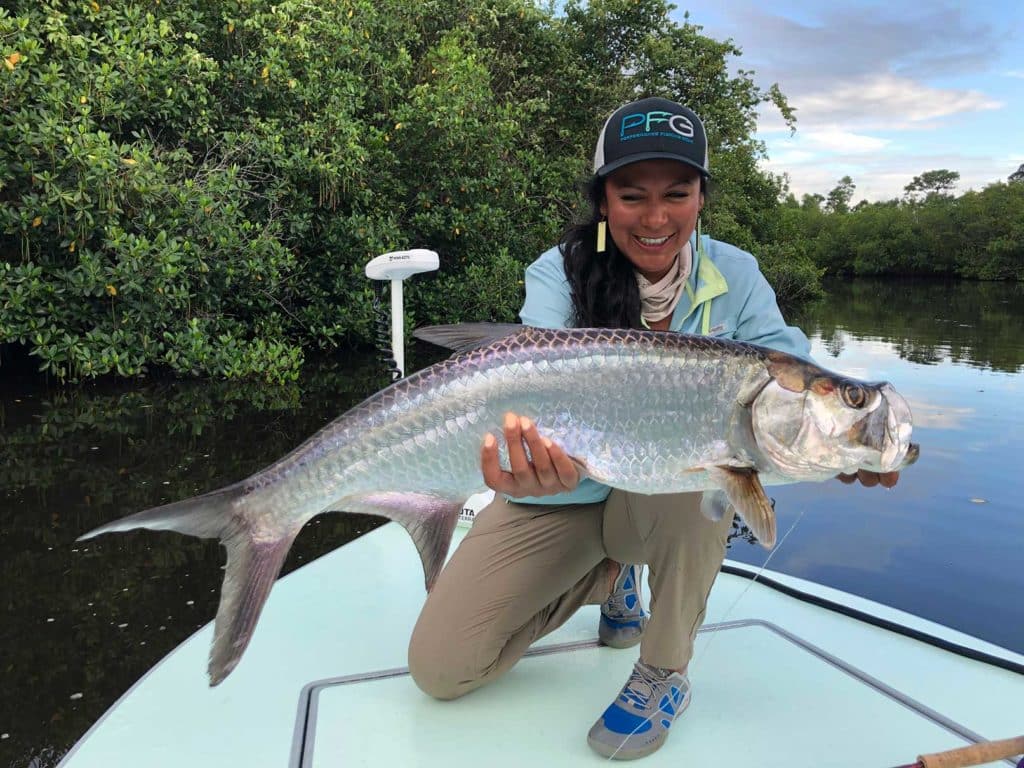
When you hear a mention of tarpon, it usually conjures in your mind images of a twisting, silver missile going airborne against the bright turquoise backdrop of an oceanside flat, or perhaps the tannic darkness of a mangrove-laden backcountry river or creek.
Tarpon, however, also frequent other neighborhoods, and often venture into urban or suburban waters far more accessible to fly anglers. Many coastal tarpon haunts now lined with development were once pristine, natural waterways where the silver king thrived undisturbed. And, despite drastic changes to the surroundings, countless tarpon continue to stage seasonally in such places, it’s wired into their DNA.
I happen to live in southeast Florida, minutes from the St. Lucie River and adjacent Indian River Lagoon, top suburban tarpon fisheries where fish of all sizes — from small juveniles to 130-plus-pound behemoths — are either residents or seasonal visitors that migrate through from spring to fall.
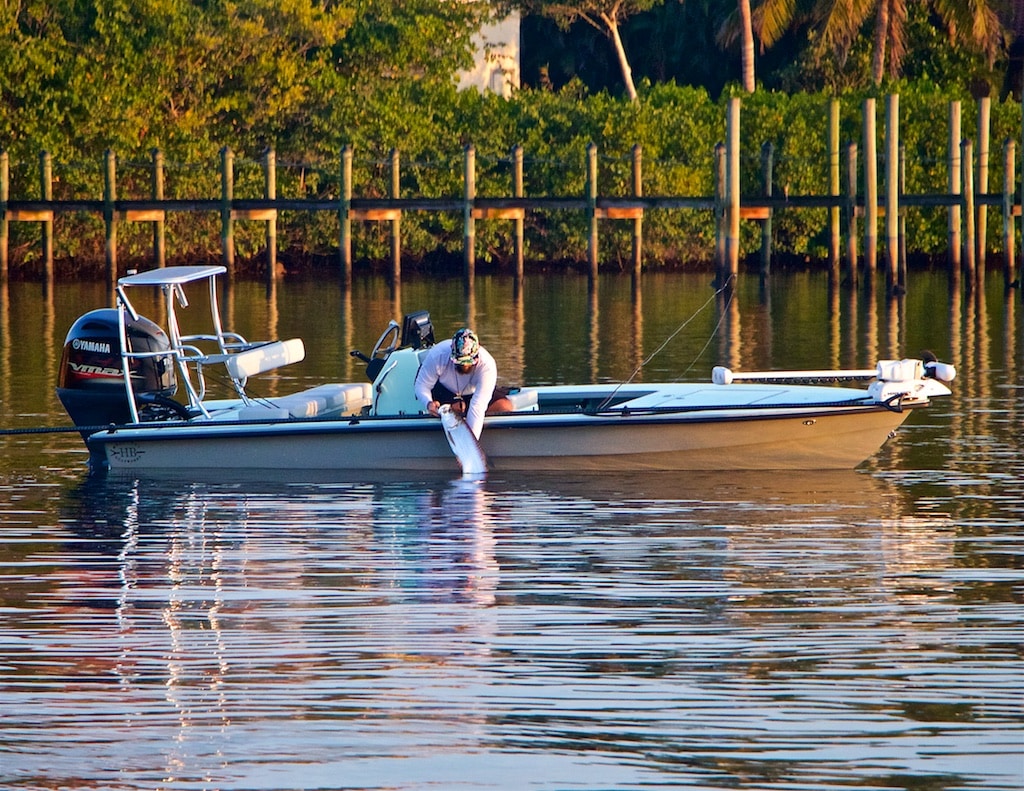
Tarpon are Survivors
As shoreline development goes, the St. Lucie River is pretty much built out, though not as densely as the waterfront in Palm Beach, Broward and Dade counties to the south. The Indian River Lagoon is a little less developed. The east side remains pretty natural, in fact, though tarpon get a lot of fishing pressure there, so they tend to have more of a city attitude at times.
Tarpon acclimate well to urban and suburban environments. They deal with heavy boat traffic, although they may not bite, and put up with far less than good water quality, even when low in dissolved oxygen or when city storm runoff throws the salinity totally out of whack. In fact, tarpon do just fine in fresh water, like snook, for that matter.
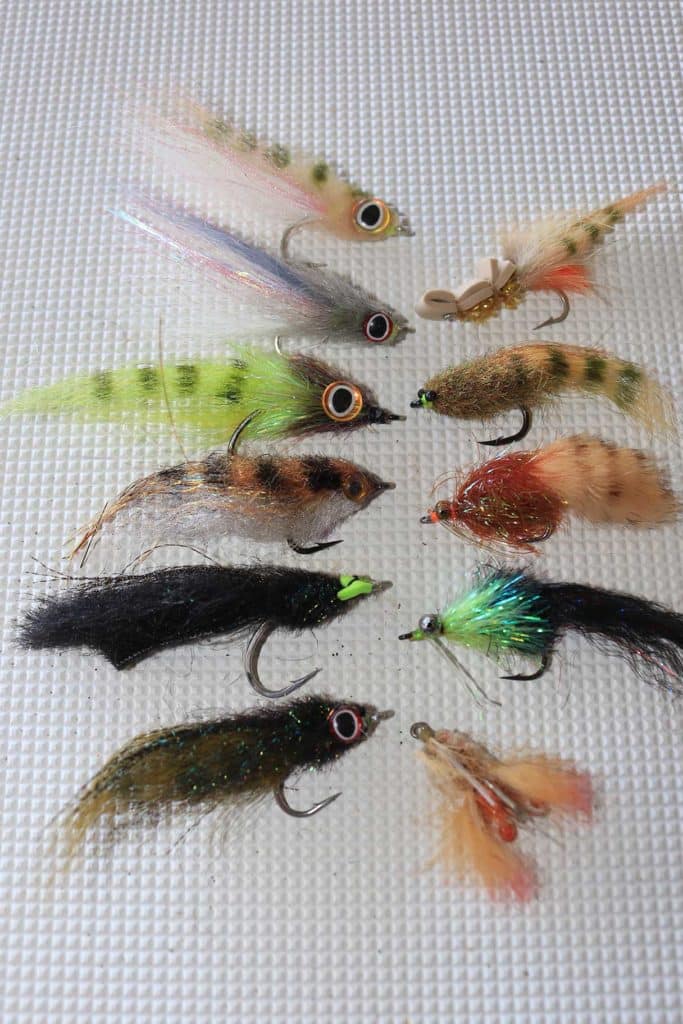
Urban Tactics
The most visual fishing of all—which is what fly fishers live for–happens at first light during summer months. Tarpon of all sizes are typically at the surface, especially after a steamy, breathless night. The lower oxygen content makes an active tarpon roll more and gulp air, giving away their position. So-called “happy poons” make sight fishing possible even in the typically dark, deep waters of suburban canals, creeks and rivers. And the fish seem to roll more and feed more aggressively if there is tidal current at that time. In this situation, you can fish a floating line and flies that sink slowly like an unweighted Toad, push a wake like a Marabou Muddler or Woolhead Mullet, or stay right on the surface like the Gurgler, a local favorite.
When the fish are rolling less frequently, or doing that tail kick after they gulp air, dredging is necessary, which means switching to a medium-sinking line. I fish a clear intermediate line whenever possible, but will switch to a Wet Cell 2, which sinks about 4 to 5 inches per second.
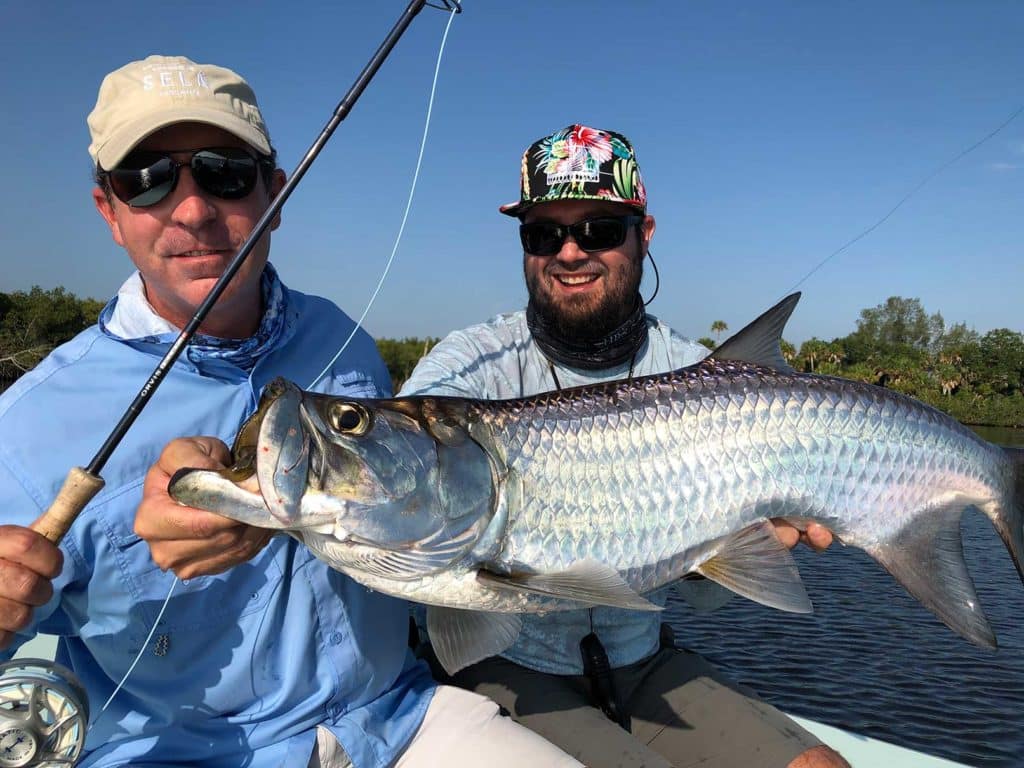
Capt. Buddy Kirkhart of Night Heron Light Tackle Charters out of Stuart, Florida, says the tarpon will quickly tell you where they are and how to approach them. “Once the water temperature reaches 77 degrees or so, your chances increase,” says Kirkhart. “I find them in the upper St. Lucie River in spring, and even through winter, while targeting snook, but they don’t bite flies as readily. In summer, that all changes.”
Kirkhart points out that stalking fish here calls for an electric trolling motor. “It’s too deep for poling, unless you see them over some of the shallower bars in the river. Otherwise I’m working fish in 6 to 8 feet or so.” Due to tarpon’s awareness of boat traffic on pretty summer mornings, he keeps his trolling motor on a low setting. “I suggest buying a new prop once you have a few gouges in it, because a roughed-up or damaged prop is noisier.”
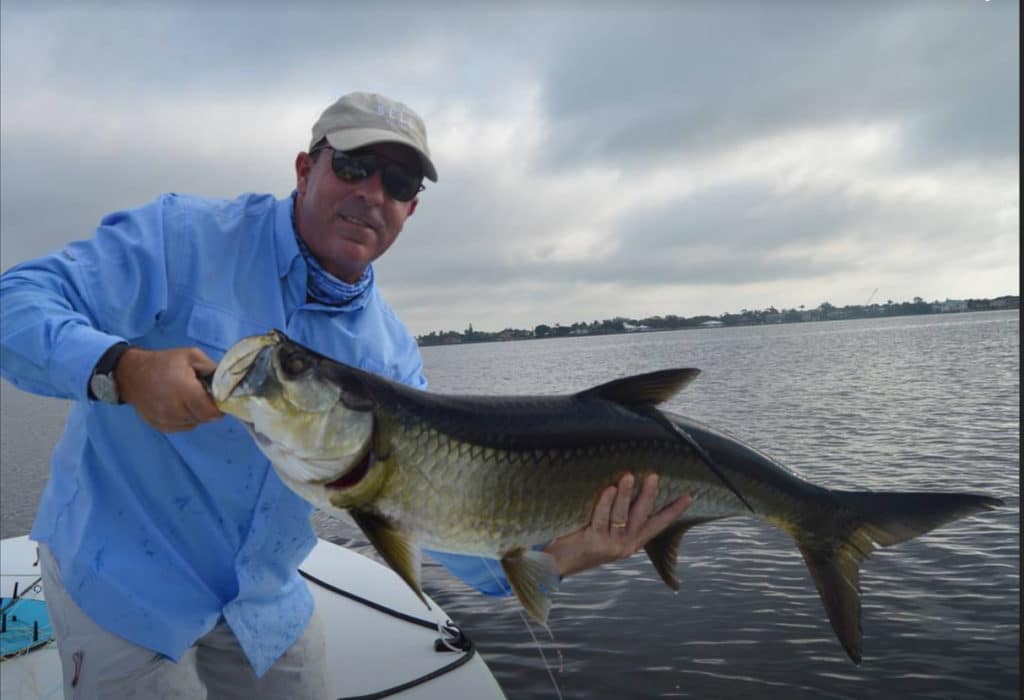
Reading the Fish
“When I am on rolling fish, I quickly assess what they are doing. If I see just the dorsal fin on the roll, that tells me they are milling on top, and staying there. When they roll quickly and I see the tail break the surface after the dorsal, it means the fish are heading down in the water column between gulps of air, and that decreases the chance of showing the fish the fly,” says Kirkhart.
The age-old favorite lure in these parts for those “up and down tarpon” is a D.O.A. TerrorEyz because it sinks quickly. Anglers lead a rolling fish by a couple of feet and oftentimes will eat it about three feet under the surface. Some local fly fishers employ heavily weighted imitations of said lure with some success.
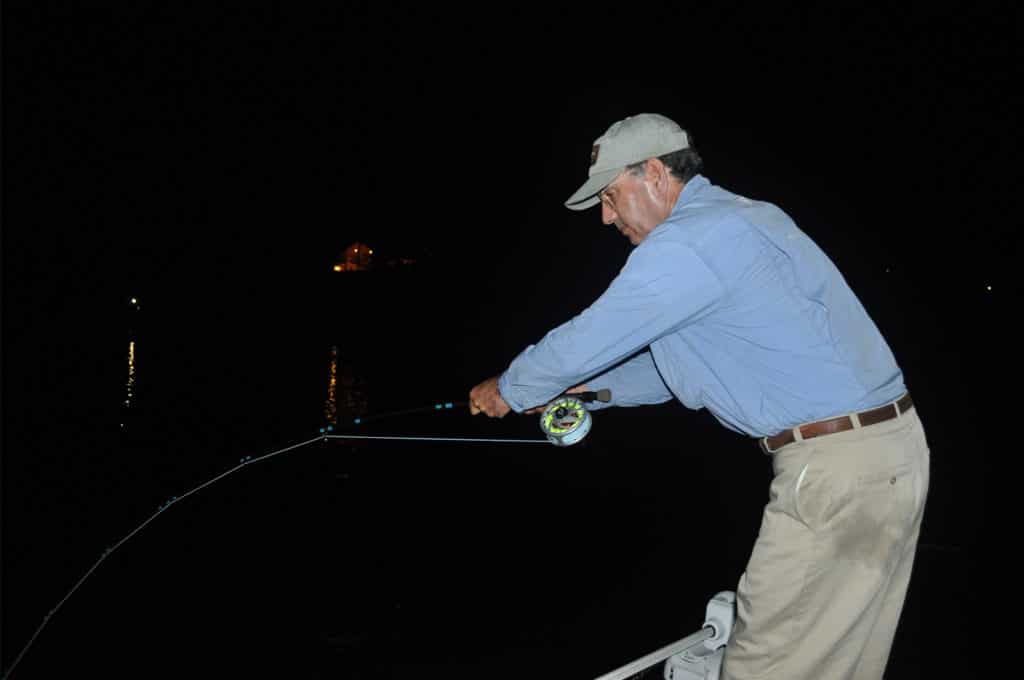
Some of the quieter little coves of rivers such as the St. Lucie may have only little fish under 15 pounds. The biggest concentrations of tarpon in the 30- to 100-pound class tends to be around the bridges and spillways at the headwaters, where fresh water enters the estuary.
“But don’t assume the fish are all like-sized when you first see a few roll,” says Kirkhart. “It’s common to see a 10-pounder roll and then an 80-pounder seconds later. For that reason, I rarely fish anything lighter than a 9-weight rod. That’s just makes it a fair fight if it’s a big fish you manage to hook.”
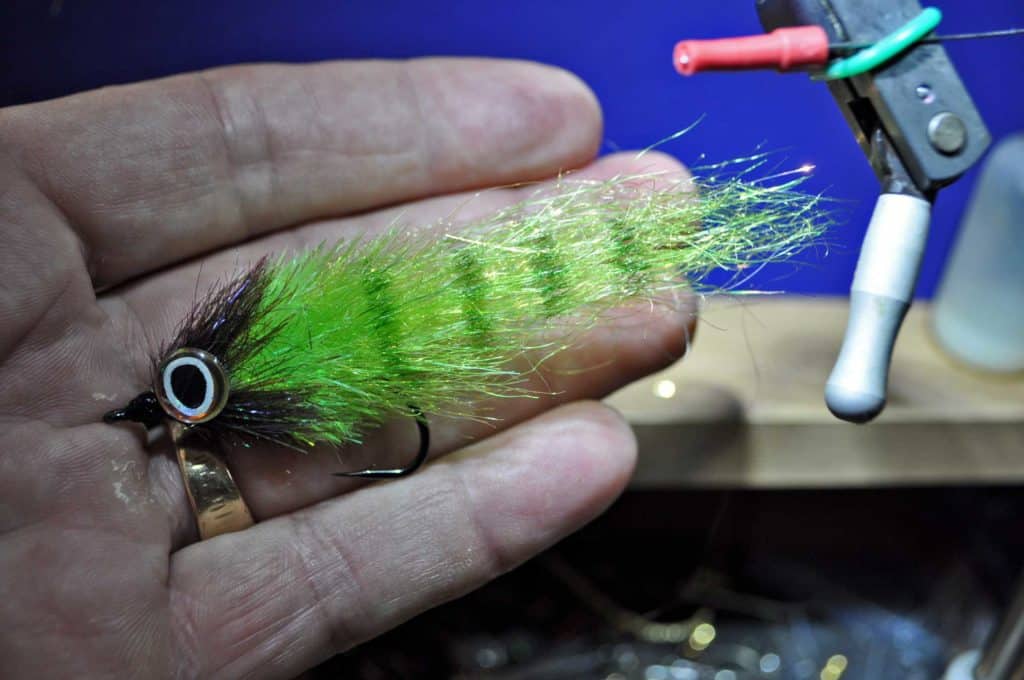
The Menu
Tarpon in developed areas that have little seagrass probably eat more baitfish than any other forage, so baitfish imitations work well. The general fly rule in tannic water is go high-profile, give the fish something they can find. Muddlers and EP Baitfish patterns in black, purple, or brown provide a silhouette that’s easy to detect when viewed from below by a fish, but that’s not to say a white, yellow or chartreuse version will fail.
Of course, hatches of small shrimp and crabs do occur, anyone who fishes at night under lighted docks and bridges knows that said crustaceans are available at times. When that’s the case, a 2- to 4-inch Gurgler is an excellent surface pattern. Color is of secondary importance, though “shrimpy” colorations are popular.
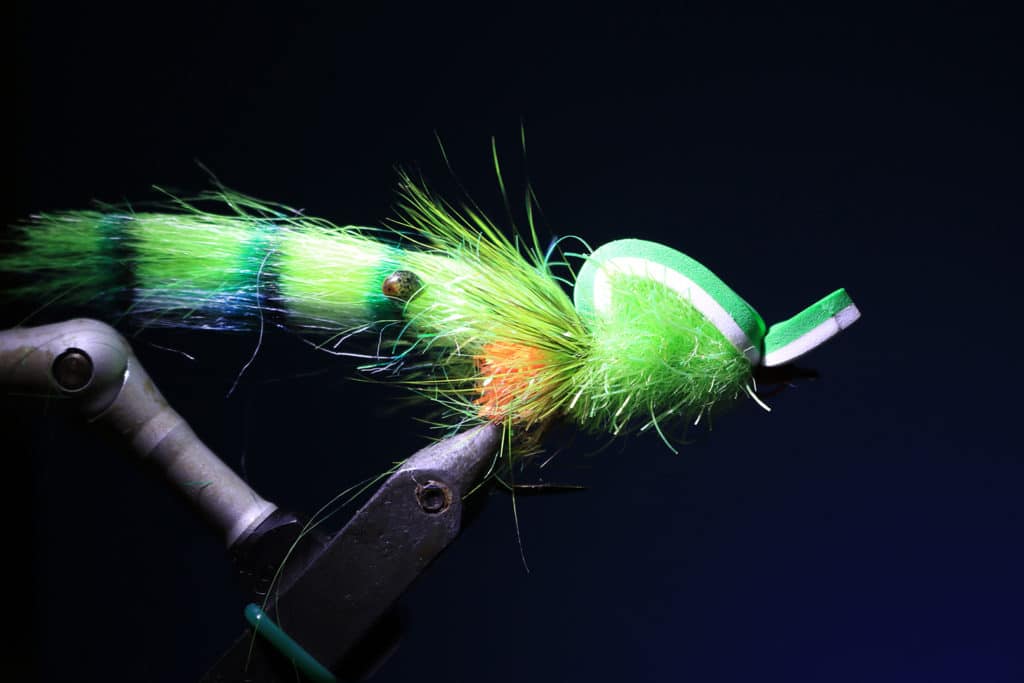
The key to surface bugs for tarpon is to keep them chugging along. Place the fly in the path of a rolling fish, some two to four feet ahead, and make short, repeated strips to create that seductive sound that draws strikes. Never stop the fly, or the fish may lose interest. Strikes can be as subtle as a quiet sip or as violent as a major explosion. Just keep your cool and set the hook!
“I’ve switched from Muddlers to Toad patterns recently,” says Kirkhart. They present a good silhouette, swim straight, and sink slowly to stay in the face of a surface fish. The Toad and the Gurgler are basically what I depend on, and my favorite combo is a black Toad fished with a clear floating line.”
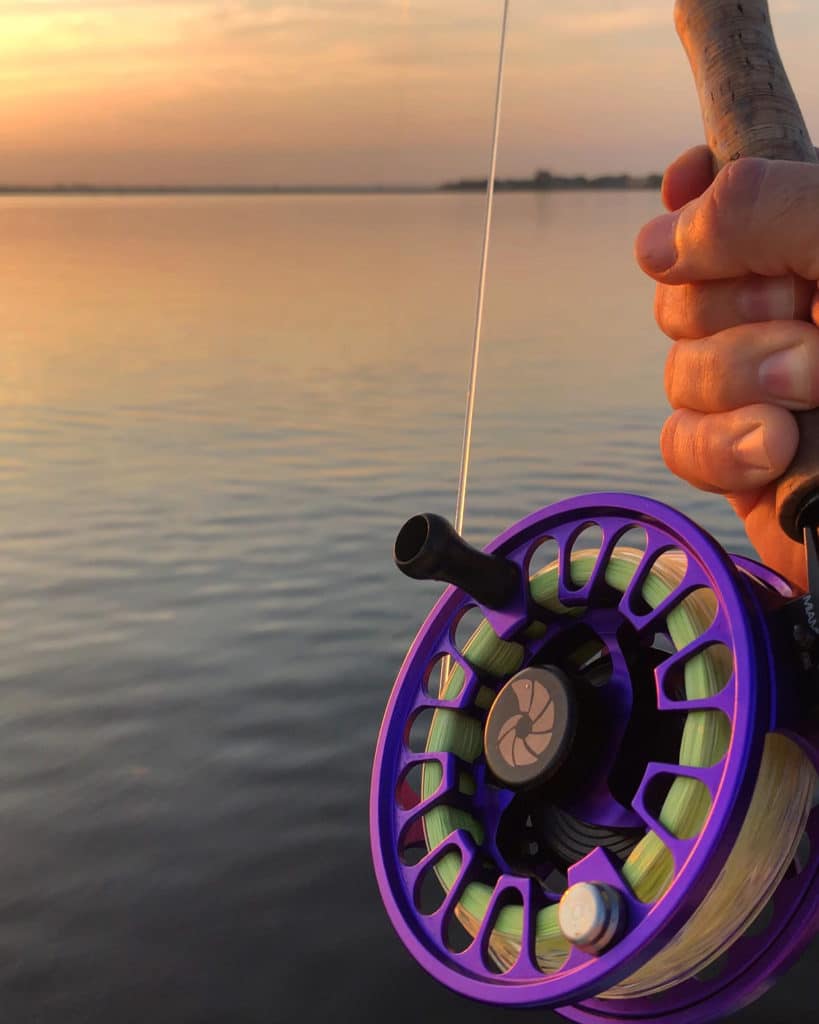
Tackle Up
As Kirkhart stresses, it pays to use enough rod to play the fish quickly and release it in good shape. I like a 9-weight rod also, but quickly grab a 10-weight if there are mainly 40- to 80-pounders on hand. And at night, when I fish tarpon in the bridge shadow lines, my 10 gets the nod.
Floating lines, both opaque and clear will do nicely. I do like clear floaters, particularly when the tarpon are still rolling at the surface well after sunup. Leaders can be short with sinking lines (a 4- to 6-footer is all you need), and made up of a 15- to 20-pound class tippet tied to a 50- or 60-pound bite tippet. When fishing a floating line and Gurgler, nevertheless, I choose a 7- to 9-foot leader.
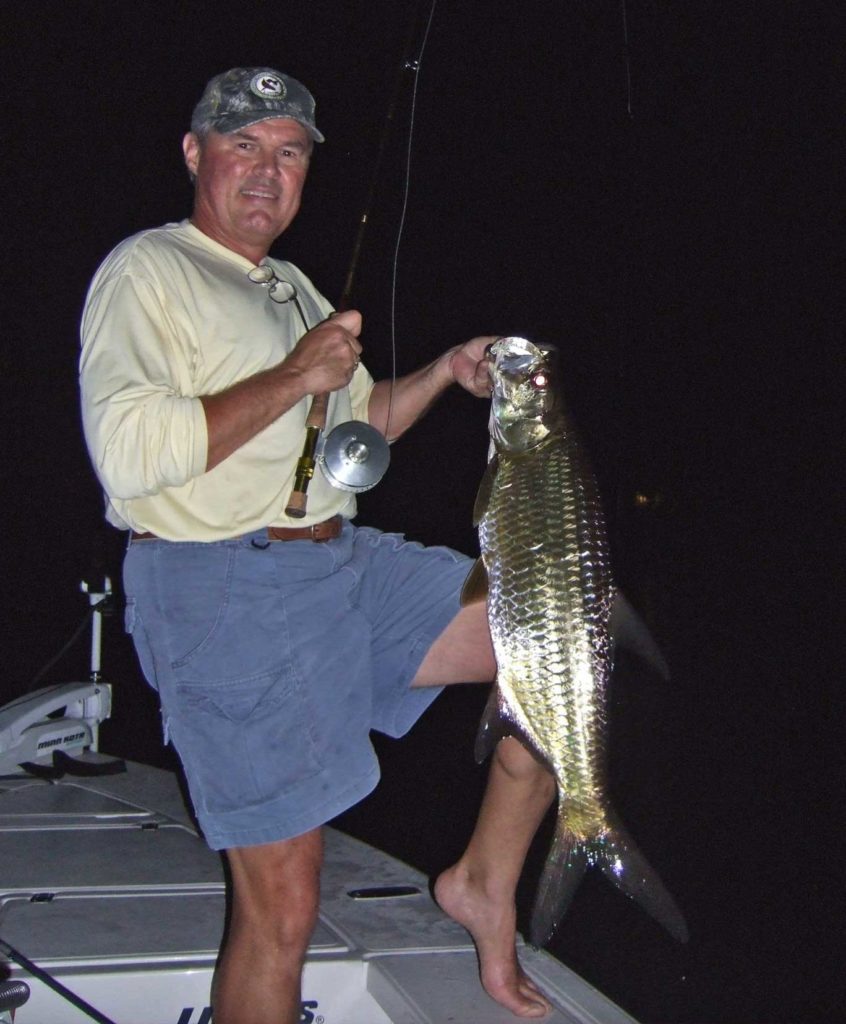
City Nights
In reality, tarpon are primarily nocturnal feeders, and I have enjoyed spectacular after-dark action in the St. Lucie River, right downtown. In the St. Lucie, I rarely see or hook tarpon under dock lights, but they do hang around in the dark perimeter of some lights. Most fly fishers here, however, pay all their attention to snook under dock and bridge lights, which are hard to ignore, since they are frequently blowing up under bait. But tarpon do cruise the surrounding shadow lines, particularly those created by the highway lights on bridges. Many fish are there during the day, too, but lay low and are wise to boat traffic.
The nighttime tarpon drill mainly consists of fishing flies a bit deeper, 3 to 6 feet under the surface, though during the fall bait run, mullet flood in and the top of the water often turns into a war zone. With so much food around, however, fishing can be frustrating.
Rather than use baitfish flies, I then opt for big shrimp and crab patterns, which stand out more and usually produce more bites. The tarpon range from 30- to 100-plus pounds in this situation, so big profile flies with top-quality 2/0 to 3/0 hooks are ideal.









